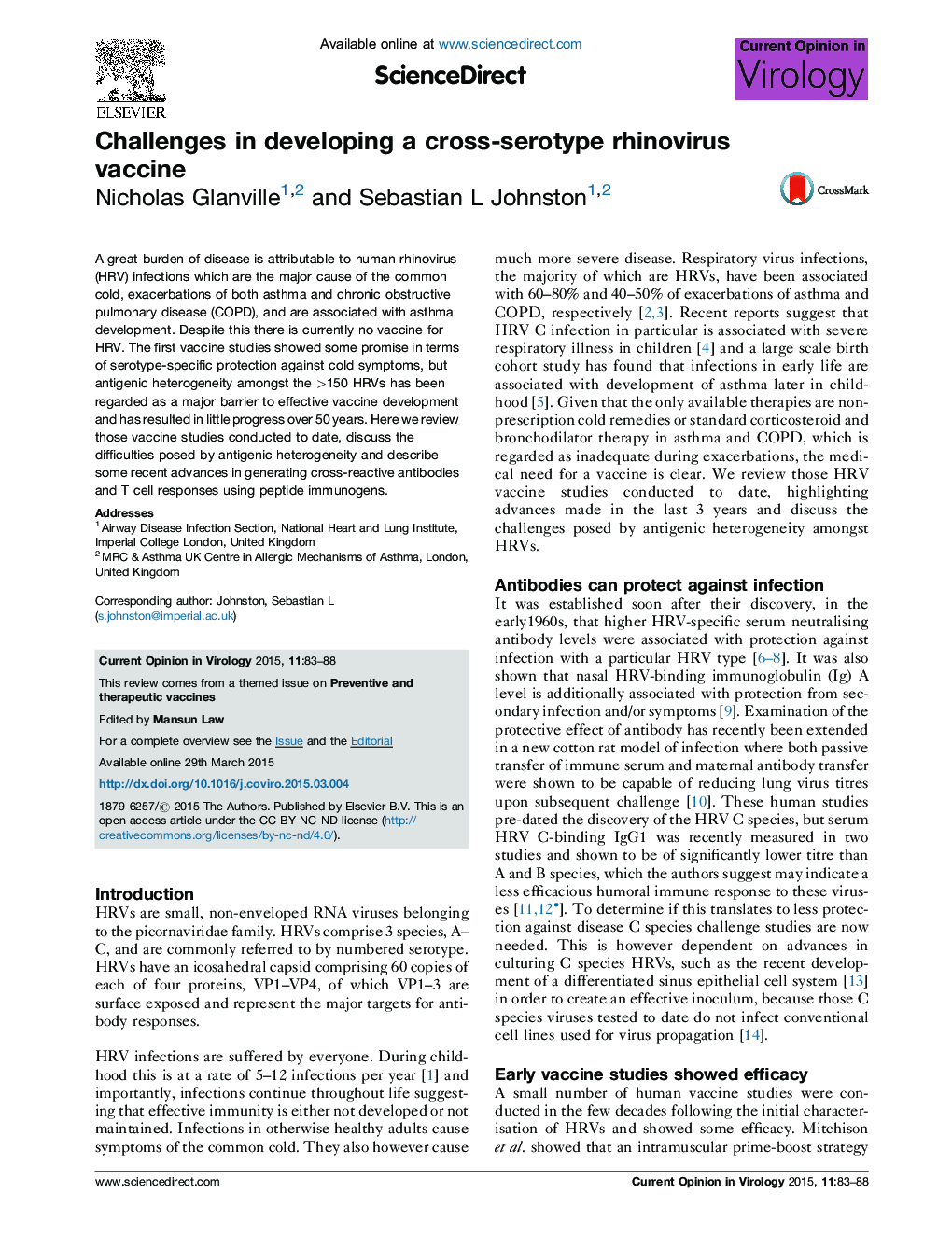| Article ID | Journal | Published Year | Pages | File Type |
|---|---|---|---|---|
| 5806528 | Current Opinion in Virology | 2015 | 6 Pages |
â¢Limited antigenic cross-reactivity amongst rhinoviruses is a barrier to vaccine design.â¢Peptide immunogens now identified however which induce cross-reactive antibodies.â¢T cell inducing vaccine strategy described which offers potentially greater cross-reactivity.â¢Human and animal models of infection now available to test efficacy of rhinovirus vaccines.
A great burden of disease is attributable to human rhinovirus (HRV) infections which are the major cause of the common cold, exacerbations of both asthma and chronic obstructive pulmonary disease (COPD), and are associated with asthma development. Despite this there is currently no vaccine for HRV. The first vaccine studies showed some promise in terms of serotype-specific protection against cold symptoms, but antigenic heterogeneity amongst the >150 HRVs has been regarded as a major barrier to effective vaccine development and has resulted in little progress over 50 years. Here we review those vaccine studies conducted to date, discuss the difficulties posed by antigenic heterogeneity and describe some recent advances in generating cross-reactive antibodies and T cell responses using peptide immunogens.
